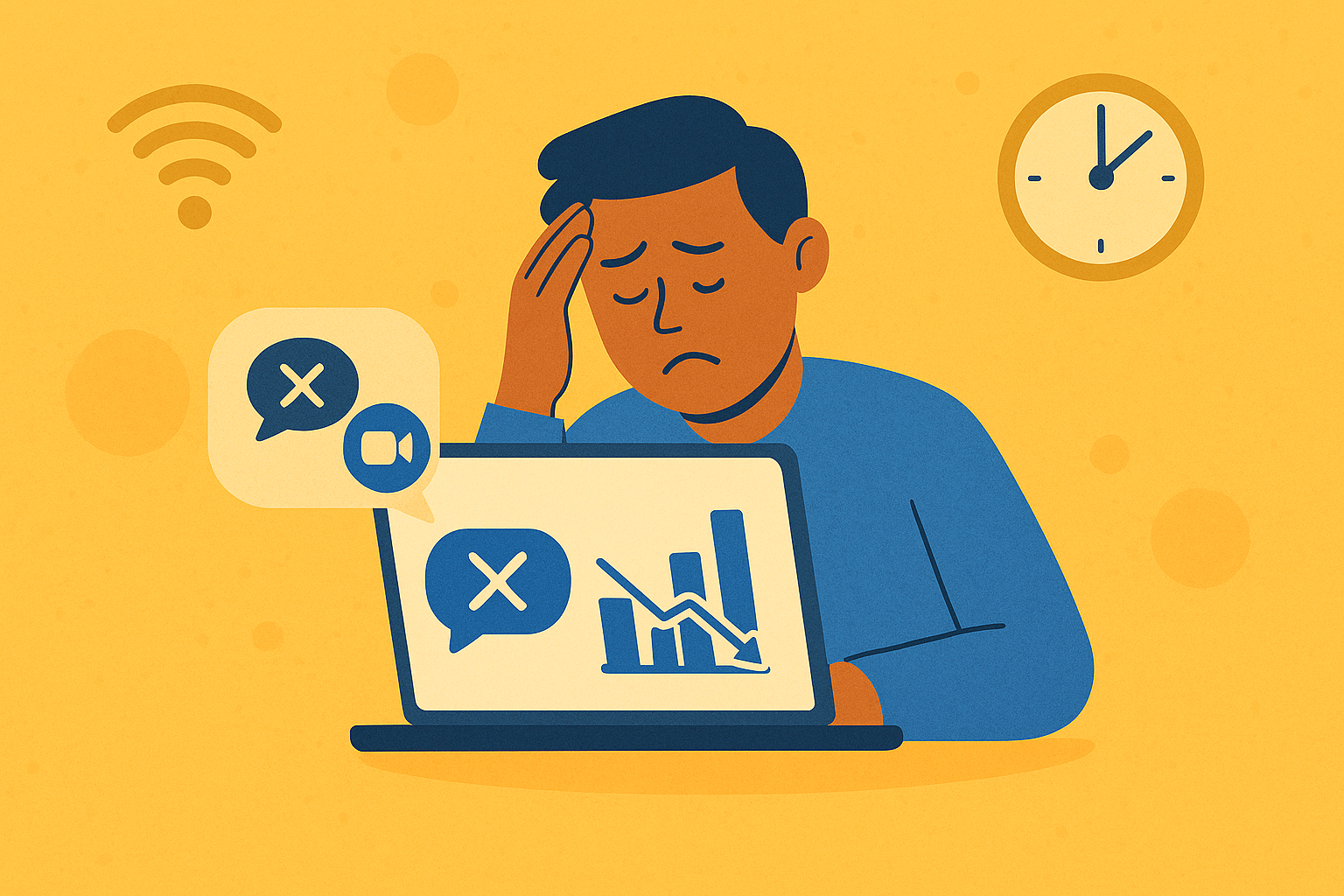
Your users don’t see technical complexities—they only experience the frustration.
Every disrupted call or poor-quality video conference directly impacts your business. These seemingly minor issues quickly add up, leading to:

Due to wasted time and repeated attempts to reconnect dropped VoIP calls.

Caused by dropped calls or poor audio & video quality, harming customer satisfaction and brand reputation.

IT teams scramble reactively rather than solving issues proactively by understanding network deficiencies ahead of time.
Standard network monitoring solutions often miss subtle performance issues like jitter, latency spikes, intermittent packet loss, and SIP interference until users start complaining.
MyConnection Server takes a proactive approach, simulating real-world VoIP and video calls end-to-end. Our solution clearly identifies hidden network issues and provides actionable data, enabling your IT team to solve problems before they impact user experience.
MyConnection Server delivers precise metrics that empower you to quickly diagnose and proactively resolve VoIP and video quality issues:
Measure variations in packet delivery causing distorted audio/video.
Quickly identify lost packets disrupting call clarity and video quality.
Detect network-induced packet discards, indicating underlying congestion issues.
Evaluate the consistency of packet delivery to ensure smooth audio and video playback.
Assess latency and network responsiveness crucial for real-time communications.
Diagnose delays in critical SIP transactions, ensuring calls connect and disconnect reliably.
Automatically identify SIP Application Layer Gateway interference—a common cause of VoIP performance problems.
Analyze patterns of packet loss distribution to pinpoint specific problematic network segments.
Instantly quantify and evaluate overall call quality from the end-user perspective.
Implementing MyConnection Server is straightforward and impactful:
Schedule your personalized demo to discover how MyConnection Server can help you proactively optimize your network. With our solution, you’ll:
The MCS solution allows you to easily deploy a VoIP/Video assessment portal for your own business. A powerful API allows for endless scope in terms of how the portal is presented to your end-users. Data can be easily segmented and the highly customizable reporting system makes analyzing results easily.
Testing your connection will uncover the true user experience.

Jitter time will increase proportionate to the number of packets lost and audio content will be missing. The distribution of the packets lost is a critical measure.
Most VoIP tests report packet loss as an average, for example dropping 25 packets out of a thousand would be expressed as 0.25%. Sounds like a very small number and not worth worrying about.
However, consider the problem if the 25 packets were dropped contiguously. At 50 packets per second that represents 50% of the time window.
Jitter is measure in milliseconds and a good result is 0 (zero) milliseconds and a bad result is any number other than zero. The higher the number the bigger the threat to audio quality.
As a practical human example consider two cars that leave 5 minutes apart heading to the airport. If the cars arrive 5 minutes apart then the jitter value is zero i.e. no change in time. If the trailing cars arrive 6 minutes apart the reported jitter is 1 minute.
If the jitter time is large then the second car arrives too late and misses the flight. In other words, to deliver a good experience the car must arrive in time to catch the flight.
For example on 1Gbps workstation the smallest data payload sent from a browser is about 48 packets. An connection at 12Mbps will consume 1 millisecond of time for each packet. Why is this and why does it matter?
12 million bits per second is 12,000 bits per 1ms. A data packet is normally 1500 bytes which is 12,000 bits. Therefore 48 data packets will consume 48 milliseconds of time on the network. If your VoIP packets are behind the data stream then on a 12Mbps connect your jitter peaks will be at least 48ms or higher.
Remember 48 packets is the smallest payload of data, plus there are many other workstations that send data on the network. If jitter is consistently high then the jitter buffer will drain and cause the application audio quality to diminish. Most Jitter buffers are around 80 – 100ms and increasing the jitter buffer is not a practical solution because it increases the talk-over lag time which also affects call quality.